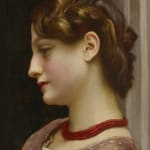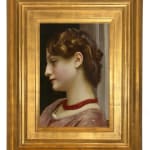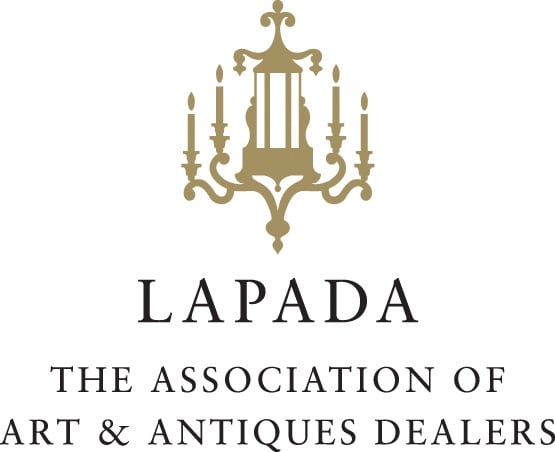Frederic Leighton 1830-1896
Framed: 63.5 x 51 cm.; 25 x 20 in.
Leighton stands as arguably the most distinguished artist of the late nineteenth century, a figure whose influence extended well beyond his Holland Park studio to shape British artistic culture. Elected President of the Royal Academy in 1878, a position he held with unprecedented authority until his death, Leighton wielded influence akin to that of a minister of state in the realm of the arts. His elevation to the peerage in 1896 marked him as the first and only British artist ever to receive such an honour. However, he enjoyed this distinction for merely one day before his death, creating the shortest-lived title in British history.
Leighton’s residence at 12 Holland Park Road, designed by his close friend George Aitchison, served not merely as a home but as a temple of aesthetic refinement, embodying the Victorian ideal of how a great artist should live. This extraordinary house, with its famed Arab Hall adorned with tiles from Damascus and its purpose-built studio, where masterpieces including Flaming June (1895, Museo de Arte de Ponce, Puerto Rico) were created, functioned as both an artistic laboratory and a cultural salon, welcoming prominent personalities of the age, from Robert Browning to Queen Victoria herself. The domestic environment from which The Coral Necklace emerged was thus one of unparalleled sophistication, where every surface and object was carefully chosen to create what contemporaries called a ‘private palace of art.’
Within the intimate confines of a modest canvas, Leighton’s portrait transcends mere representation to become a meditation on feminine virtue, aesthetic philosophy, and the enduring dialogue between antiquity and modernity that defined nineteenth- century British art. Depicted in profile; the model’s downcast eyes indicate introspective reverie. Leighton’s sublime technical proficiency is seen in her porcelain skin which contrasts sharply with the dark background, in the golden hues of her hair and in the delicate embroidered drapery. It is a masterful arrangement of textural harmonies, embellished still with the eponymous coral necklace, serving as the focal point around which the painting is built. Its deep crimson beads, meticulously detailed to highlight their natural irregularities, provide the only splash of saturated colour in an otherwise muted palette. Coral, prized since antiquity for its protective qualities and association with feminine virtue, symbolises the delicate balance between natural beauty and cultivated refinement that characterised Victorian ideals of femininity.
Leighton’s synthesis of classical idealism with contemporary naturalism positioned him at the forefront of the Aesthetic Movement, where narrative content gave way to compositions that relied entirely on mood and formal harmony. We witness this perfectly distilled in The Coral Necklace.
Provenance
Christie’s, London, 25 November 1988, lot 97Private Collection
Join our mailing list
Be the first to hear about our upcoming exhibitions, events and news
* denotes required fields
We will process the personal data you have supplied to communicate with you in accordance with our Privacy Policy. You can unsubscribe or change your preferences at any time by clicking the link in our emails.




